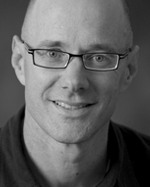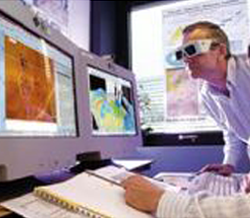
Ange-Therese Akono, PhD
Northwestern University
Dr. Ange-Therese Akono is an assistant professor and Louis Berger Junior professor in the Department of Civil and Environmental Engineering at Northwestern University. Dr. Akono holds a PhD (2013) and an MSc (2011) from the Massachusetts Institute of Technology (United States), along with an MSc (2009) from the École Polytechnique (France). Dr. Akono's honors include the NCSA faculty fellowship (2016-2017), the ASCE New Faces of Civil Engineering Professionals Award (UIUC, 2016), the ASCE nomination for the DiscoverE New Faces of Engineering Award (UIUC, 2016), the Academy for Excellence in Engineering Education Collins Fellowship (UIUC, 2015), and the MIT Energy Initiative Fellowship (MIT, 2009). Dr. Akono's laboratory investigates fracture and failure mechanisms in complex materials systems from the molecular level up to the macroscopic scale. This research is articulated over three main thrusts: environment-friendly and high-performance structural materials, natural and nano-engineered biomaterials, and geological materials such as shale or rock. Dr. Akono's areas of expertise include nano-mechanics, fracture analysis, nanotechnology, advanced experimental testing and multiscale modeling.
|
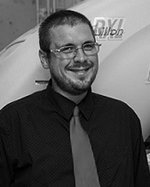
Dustin Crandall, PhD
National Energy Technology Laboratory
Dr. Dustin Crandall is a research engineer at the National Energy Technology Laboratory (NETL) in Morgantown, West Virginia. He graduated from Clarkson University with a PhD in mechanical engineering, working with researchers at NETL on his dissertation titled "Two Phase Flow in Porous Media and Fractures". Following graduation, Dr. Crandall was awarded a two year postdoctoral fellowship by the National Research Council evaluating multiphase transport in fractures. Since the post-doc his primary research activities have focused on simulation related to, and experimental analysis of, computed tomography derived flow in fractured geologic media.
|
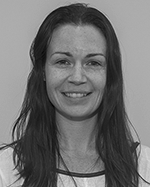
Jennifer Druhan, PhD
University of Illinois, Urbana-Champaign
Dr. Jennifer Druhan is an assistant professor in the Department of Geology at the University of Illinois Urbana-Champaign. She joined the faculty in 2015 after completing a National Science Foundation postdoctoral fellowship at Stanford University. She holds a PhD from the University of California Berkeley, Department of Earth and Planetary Sciences, and an MS from the University of Arizona, Department of Hydrology and Water Resources. Dr. Druhan’s research centers on the relationship between physical structure and chemical reactivity in aquifers. She is a long-time associate of the Lawrence Berkeley National Laboratory and collaborates with Earth Science Division staff scientists in development and application of reactive transport software. She has extensive experience in both imaging and modeling techniques pertinent to geologic CO2 storage and was a member of the CO2 Capture Project (CCP) phase 3 at Stanford University.
|
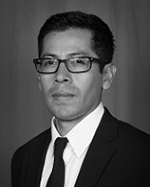
Nicolas Espinoza, PhD
University of Texas, Austin
Dr. Nicolas Espinoza is an assistant professor in the Department of Petroleum and Geosystems Engineering at the University of Texas-Austin. He is currently working in the Geomechanics Theme in the Center for the Frontier of Subsurface Energy Security (CFSES), an Energy Frontier Research Center (EFRC). Dr. Espinoza will collaborate with Drs. Charlie Werth and Ange-Therese Akono in the Geochemical Reactions Theme.
|
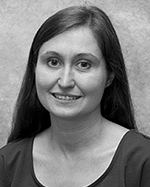
Angela Goodman, PhD
National Energy Technology Laboratory
Dr. Angela Goodman is a Physical Scientist at the National Energy Technology Laboratory (NETL) whose research interests are focused on CO2 sequestration in geologic reservoirs with respect to storage capacity and injectivity; stochastic modeling of storage resource; CO2 capture from power plants using high surface area coordination polymers, metal organic frameworks, and zeolitic imidazolate frameworks; and characterization of gas, liquid, and solid interactions using infrared spectroscopy. She is currently the Technical Portfolio Lead for Carbon Storage focusing on Resource Assessments. Her resource assessment work directly addresses the Strategic Center for Coal’s program goal of predicting storage capacity to ±30% accuracy by further developing and refining CO2 storage methods for geologic formations. A suite of methodologies are being developed and evaluated to quantitatively assess storage resource for reservoirs, including saline formations, oil and gas reservoirs, unmineable coal seams, and organic-rich shale. Dr. Goodman earned her Ph.D. in Physical Chemistry at the University of Iowa in 2000, where her research focused on the chemical balance of the atmosphere. Dr. Goodman has been a research physical scientist with NETL since 2001.
|
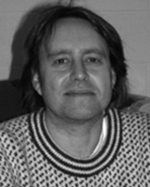
William Harbert, PhD
National Energy Technology Laboratory
Dr. William Harbert is a professor of geophysics at the Department of Geology and Environmental Science at the University of Pittsburgh and an ORISE scientist working at the US Department of Energy, National Energy Technology Laboratory (NETL). He earned his MS in exploration geophysics and PhD in geophysics from Stanford University. Dr. Harbert will contribute to petrophysical and geomechanical parameters, relationships, and models determined from core measurements at the NETL. He is a lifetime member of the Society of Exploration Geophysicists, a registered professional petroleum geophysicist, and member of the American Association of Petroleum Geologists and Society of Petroleum Engineers.
|

Kristian Jessen, PhD
University of Southern California
Kristian Jessen is Associate Professor in the Mork Family Department of Chemical Engineering and Materials Science at University of Southern California. He holds B.Sc., M.Sc. and Ph.D. degrees in Chemical Engineering from the Technical University of Denmark. Dr. Jessen is the co-founder of the consulting company Tie-Line technology ApS that specializes in pressure-volume-temperature (PVT) software for design and optimization of gas injection processes. He has authored and co-authored numerous technical papers in the area of modeling and simulation of enhanced oil and gas recovery by gas injection processes. His current research activities include CO2 storage in subsurface formations and characterization and modeling of mass transfer and sorption phenomena in the context of unconventional oil and gas resources.
|
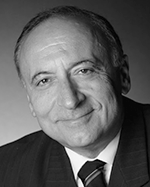
Theodore Tsotsis, PhD
University of Southern California
Professor Tsotsis received his Ph.D. in Chemical Engineering from the University of Illinois at Urbana-Champaign in 1978. He then joined the University of Southern California (USC), where he currently holds the title of the Robert E. Vivian Professor in Energy Resources in the Mork Family Department of Chemical Engineering and Materials Science. He also served as the Department’s inaugural Chair in 2005. Professor Tsotsis’ research interests are in the areas of transport, adsorption and reaction in complex porous media, reaction engineering, reactor design, and membrane separations. He is the author of over 230 technical papers, several book chapters, six U. S. and one European patent, and one book. He has also edited two Technical Meeting Proceedings volumes. He has worked on a broad array of problems, ranging from the abstract and theoretical (symmetry breaking instabilities, reaction rate oscillations) to the practical and applied (petroleum upgrading, and membrane reactors and bioreactors). Professor Tsotsis was the co-founder and a member of the executive board of USC's NSF/IGERT Center in Environmental Engineering. He is a Fellow of the AIChE.
|

